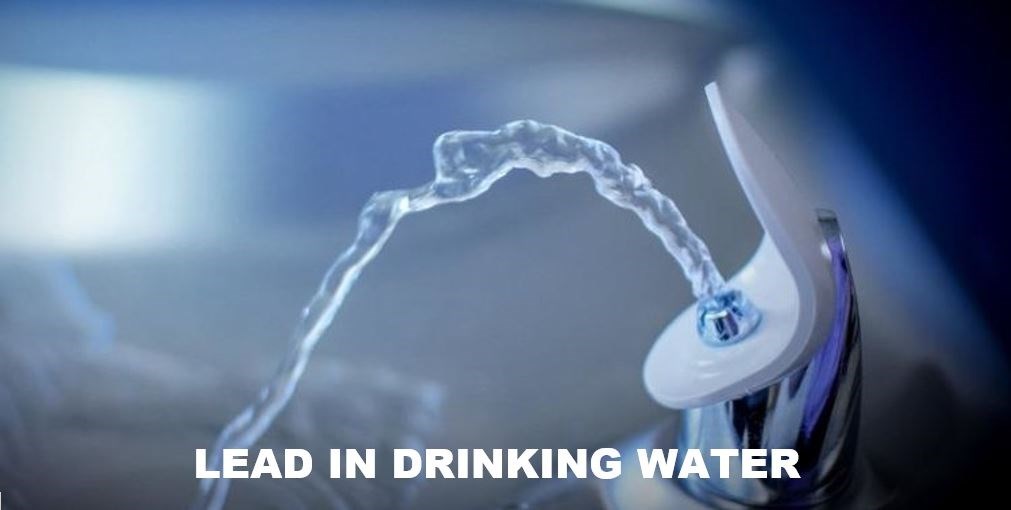Lead in Drinking Water

Manitoba Public Health and Office of the Drinking Water are working with school divisions, across the province, to reduce children’s exposure to lead from school drinking water.
Lead is a naturally occurring metal, but is considered harmful if inhaled or swallowed. Exposure can have a range of adverse health effects.
Manitoba school divisions, including Pembina Trails, are taking steps that include testing drinking water for lead and copper; sharing results with parents, students, staff and other interested stakeholders; and taking appropriate and necessary actions to correct problems.
WHAT IS LEAD?
Lead is a naturally occurring metal but is considered toxic to humans if inhaled or swallowed. Everyone is exposed to trace amounts of lead through air, soil, household dust, food, drinking water and various consumer products. Drinking water is not generally the most significant source of exposure to lead in Canada, but can become a concern in cases where lead leaches from plumbing materials. Note that lead from drinking water is not absorbed through the skin and is not taken in through breathing. As a result, exposure to lead from showering, bathing, dish washing or cleaning is not a concern.
Lead is completely undetectable by the human senses and is odorless, tasteless, and invisible when dissolved in water. Lead has a range of adverse health effects that include lowered birth weight and slowed physical and mental development in infants; lowered IQ levels; impaired hearing; reduced attention span; behavioural issues; and poor classroom performance in young children.
WHERE DOES THE LEAD IN DRINKING WATER COME FROM?
Lead is not usually found in well water or water from a municipally treated water facility. However, lead can enter drinking water from various parts of a building’s plumbing system, including lead solder, brass fixtures, water fountains, and lead piping. The amount of lead in drinking water depends on how corrosive the water is, the materials used in constructing the plumbing system, and how long the water is in contact with lead in the pipes or fixtures. The longer water stands in the plumbing system, the more lead the water can dissolve from lead-based plumbing fixtures and components.
TAKING ACTION:
Due to the sensitivity of children to lead, the national guideline for Lead in Drinking Water recommends testing all taps and drinking fountains in schools and childcare facilities for lead. As a result, Manitoba Public Health’s campaign aims to encourage voluntary actions by school divisions and childcare facilities across the province to reduce potential exposure to lead in drinking water through training, testing, and taking action. In response, Pembina Trails is proactively taking the following steps:
- We are developing a sampling plan that includes conducting testing at outlets where students and staff access water for drinking and cooking.
- We will share testing results with our community and, if needed, will follow recommended actions.
- We will provide awareness information to school staff, parents, custodians and our community in the hopes of educating on the risks of lead poisoning and the means of mitigating these risks.
Recognizing that communication is key, Lead in Drinking Water Information pamphlets will be sent to each school to share with parents. All testing results from schools will be posted on this website as results are received.
CORRECTIVE MEASURES
Where lead levels are above the national guideline, the school division will take necessary action for reducing lead as set out by the Province of Manitoba. This may include:
- Closing plumbing fixtures that exceed the limit (Ex: removing handles, posting signs, or bagging the fixture).
- Posting “Do Not Drink” signs on taps that cannot be easily closed.
- Providing an alternate safe drinking water source (ex: bottled water coolers) particularly if the issue is widespread throughout a building.
Maintenance solutions for reducing/removing lead in schools where test results are above the allowable limits may include:
- Replace lead pipes, if present.
- Replace fixtures with new “lead-free” products.
- Add point-of-use filtration devices that are NSF certified
- Reconfigure building plumbing to bypass sources of lead contamination. Target the small pipe branches that may have more elbows, joints and therefore more solder.
- Add automatic flushing valves to reduce water stagnation.
Operational solutions for reducing lead levels if levels are below the national guideline but still detectable may include:
- Implement daily or weekly flushing programs as needed - running all indoor taps and water fountains until the water is clear and cold.
- Advise students and staff or residents to run the water until cold before drinking.
- Clean tap aerators regularly.
- Use only cold clear water for food and beverage preparation.
WATER SAMPLING TEST RESULTS:
Test results will be updated and posted as they become available. It is important to note that, immediate action has been taken on any results that were above the allowable limit. Water sampling test results can be found here.
If you have questions or concerns about lead testing in your school, please contact the divisional Safety Officer.
E-mail: lcarriere@pembinatrails.ca
Useful Links
- Office of Drinking Water - Website
- Water & Waste Dept - Lead & Winnipeg Water
- Fact Sheet - Lead in Drinking Water: Information for Schools & Child Care Facilities
- Fact Sheet - Lead in Manitoba Water Supplies
- Health Canada Fact Sheet: Reducing Your Exposure to Lead in Drinking Water
- Canada Guideline: Testing for Lead in School Drinking Water
- Guideline for Canadian Drinking Water Quality: Technical Guideline for Lead Testing
- EPA Guideline: 3T's for Reducing Lead in Drinking Water for Schools and Child Care Facilities


Please provide your question and email address in the fields below.
Your question has been successfully submitted.
CloseThank you.